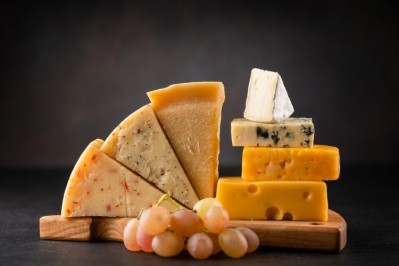Having it both ways: Creating a ‘middle path’ to premium yet affordable food and beverage product innovation

Amid a backdrop of inflationary pressures, price hikes and geopolitical instability, consumers all over the world and especially in the Asia Pacific region are on the lookout for affordable options when making food and grocery purchases.
But at the same time, there remains a significant reluctance to completely surrender little luxuries, making for a rise in demand for premiumisation as well.
With both of these seemingly contradictory trends simultaneously on the rise here, food and beverage firms are increasingly under pressure to create options that can fulfil both of these demands.
“It is very clear that consumers want things to be more affordable but also more premium, and no matter how conflicting it may seem there is a definite need for food firms to deliver in order to stay relevant,” AAK SEA Regional Director Nikesh Hindocha told FoodNavigator-Asia at the Fi Asia 2023 show in Bangkok, Thailand.
“When it comes to doing this, the only way is to create a middle path that can hit both ends of the spectrum and here there are several areas to consider from both the perspective of improving the actual food product quality, and also not increasing costs for the manufacturer.
“One example we have is the creation of a compound chocolate solution using a cocoa butter alternative that brings final chocolate products closer to the quality and attributes of a premium chocolate made with cocoa butter, which would generally be much more expensive.
“It also tackles the challenge of needing to switch entirely to cocoa butter as a premium ingredient, which would not only cost more but potentially also have CAPEX cost implications as most factory setups allow for the use of cocoa butter alternatives but not cocoa butter.
“So this does improve the quality of the chocolate compared to previously not only in terms of taste but also heat stability to prevent the formation of chocolate blooms – all of which contributes to better sensory characteristics and the formation of a more premium chocolate via a middle path instead of a very expensive one.”
He added that this midway alternative has seen a particularly popular response in this part of the world, driven strongly by the impacts that inflation has had on many raw material costs from cocoa to dairy.
“This is not limited to cocoa and chocolate – there are also similar options for an area such as the plant-based meat market which has had its ups and downs over product affordability, quality and relevance to the Asian market,” Hindocha said.
“Here, we have looked closely at the visibility aspect of products to improve the premium aspect – for instance conventional pepperoni has white fat particulates inside each slice that are associated with ‘real’ meat use and hence better quality, but plant-based options are rarely able to do this as the fat will melt away, leaving just a red slice.
“This lack of a visible characteristic has contributed to an association with lower quality, hence we have developed a more heat-stable fat option that allows the particulates to be maintained even after being baked – and consumers associate this with a more premium, more luxurious product when this visual sense is satisfied.”
Making the most of a challenging time
There can be no doubt that this is a challenging time for just about every industry, but Hindocha believes that APAC remains ripe for recovery.
“The economies in some markets are down which has resulted in slower consumer demand and this has impacted volumes in the first half of the year, but now we are seeing things picking up as China increasingly in the picture,” he said.
“Recovery from the pandemic has unfortunately taken longer than expected due to various underlying factors, and we also have not seen consumers here pick up plant-based at the expected pace – and we hope that investing in innovation can help with the transformation.
“That said, we do still see market growth in APAC and purchasing power is still growing, so we remain optimistic about this market and continue to invest behind this.”





